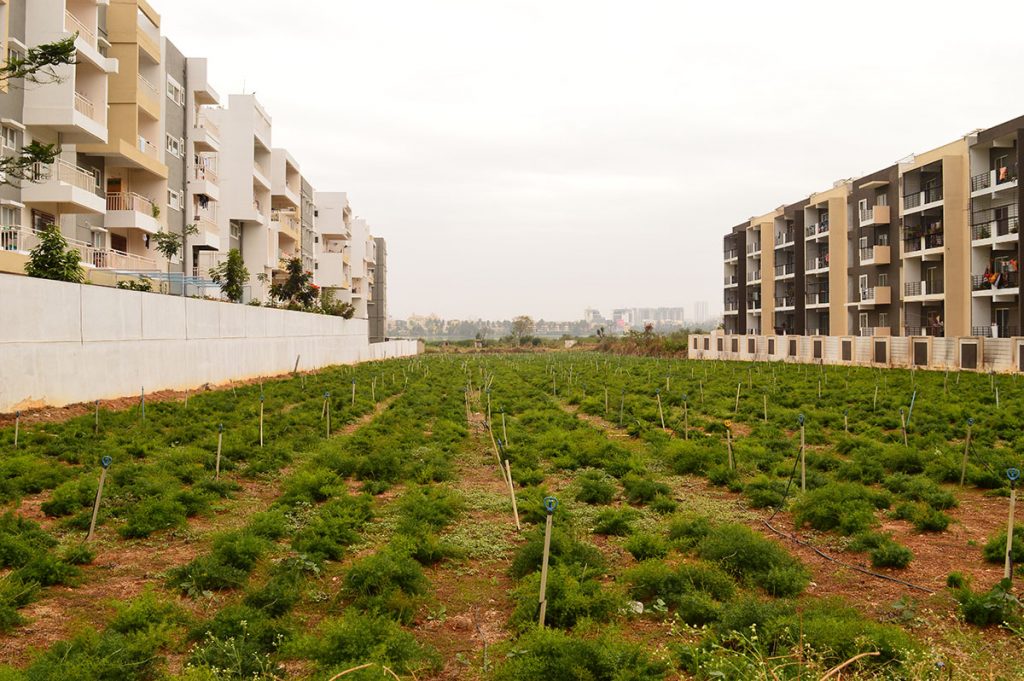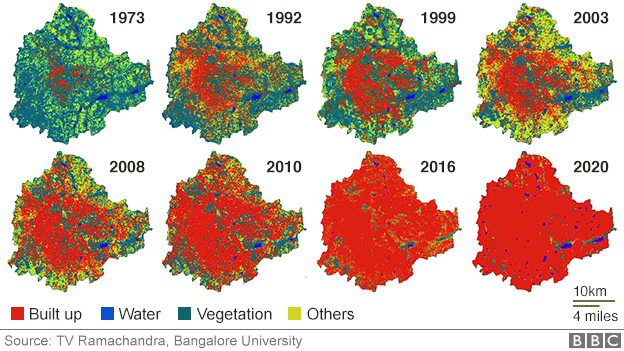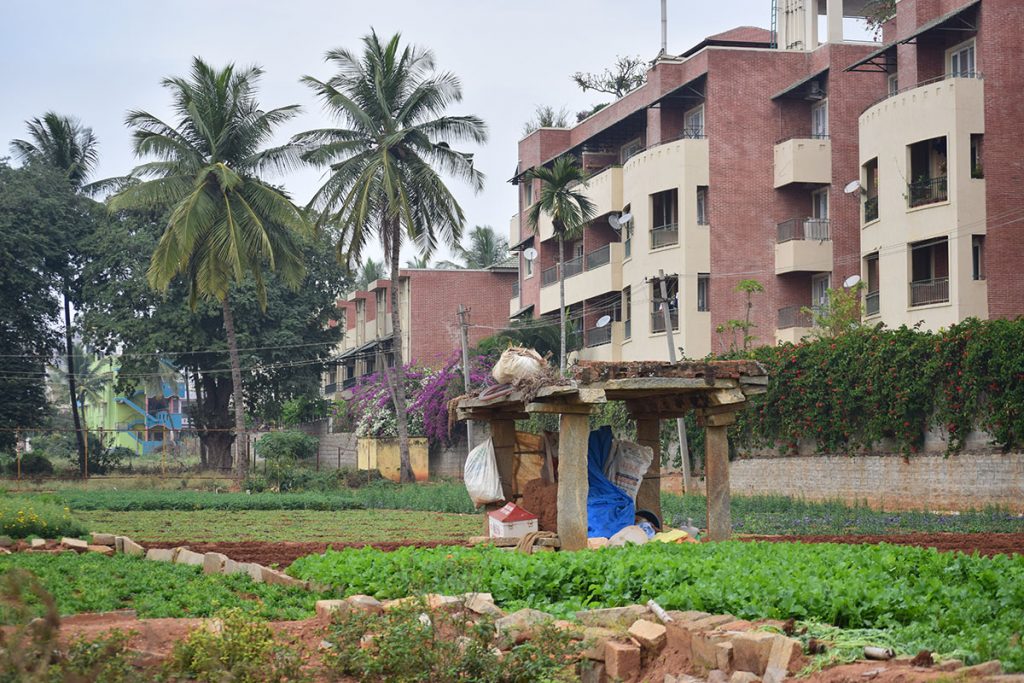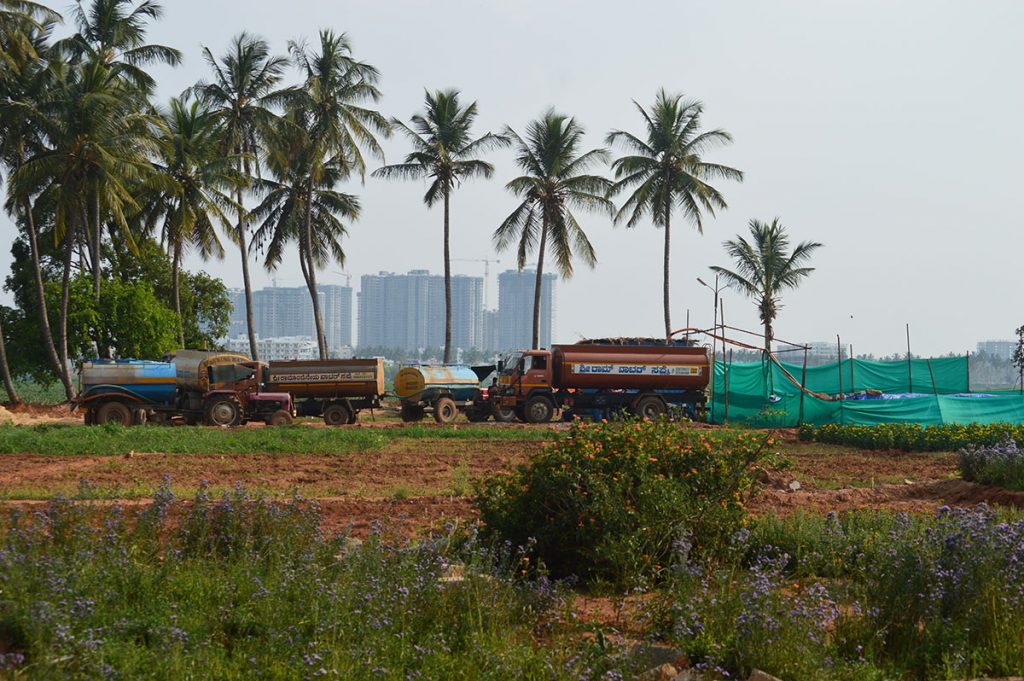But individual citizens growing vegetables on terraces and patios requires time, money and space that most people can’t afford. For the traditional farmers in Ramagondanahalli, their only equity is in their land. When that land becomes less productive because of polluted water, they turn to selling.
One villager who turned from rose farmer to real estate broker is embracing the development.
Sanjeev Sanjeevappa grew up in Ramagondanahalli, but he doesn’t think a farming lifestyle is feasible any more in the city. His community’s farms are surrounded by high-rises for Whitefield’s IT workers, and the market prices for crops are constantly in flux.
Sanjeev is young, tall and wears solid gold necklaces and rings. He says he owns 10 acres of land outside the city, 20 times what Hanumanthappa farms on, and he bought it by selling a small portion of land in Ramagondanahalli.
This struck him and he thought other farmers could do the same, so he started to broker land deals. Being a real-estate agent fetches him a lucrative commission. Typically, intermediaries like him take 2% of the selling price.
In 2012, an acre of land in Ramagondanahalli was selling at 40-60 million rupees ($618,000-$927,000; £495,000-£742,000). Today it costs double that and fetches between 80-100 million rupees ($1,235,000-$1,544,000; £989,000-£1,236,000).
He believes the only way out of agricultural instability is to bundle farmers’ small plots together and sell their combined land as a package to developers. He is a farmer-turned-real-estate agent who connects farmers with builders.
“For farmers who have one-tenth of an acre of land, it is very difficult to sell it to the builders directly. So, we pool farmers who own small portions of land and collectively make them agree to sell it to builders,” Sanjeev says.
He brings together about 50 farmers at a time. Then, he will work with a developer to build houses and negotiate with buyers for a good price. Within each new layout or set of apartments, two units are typically reserved for the farmer whose land it’s built upon. That way, farmers can rent out one unit to use as a revenue stream. Or, the farmer can take their money and buy more land further away.
“It is always better for them to sell the land and then go further away from the [city limits],” Sanjeev says. “After they sell it to the builders, I would buy land further away and continue the agriculture profession.”
Muniraju Venkataswamy worked with a broker like Sanjeev to sell his plot in Ramagondanahalli five years ago. His family had been farming his land for three generations. But the apartments being built in Ramagondanahalli draw more groundwater for utility purposes, which depleted the well around his farm. He now has to rely on polluted lake water. He’s continuing to farm until the developer breaks ground on his farm.
Venkataswamy got 5 million rupees ($77,000; £63,000) for his one-tenth of an acre plot. With that money, he built a three-story apartment building in Ramagondanahalli. His family lives on the ground floor and he rents out the upper two storeys, which brings him 15,000 rupees per month ($230; £185).
He also had money left over to purchase a bigger piece of land 30km (19 miles) away from the city to continue farming.
“My future generation will need land for farming. If I stay here it won’t be enough. So we bought a bigger portion of land by selling here,” Venkataswamy says.








